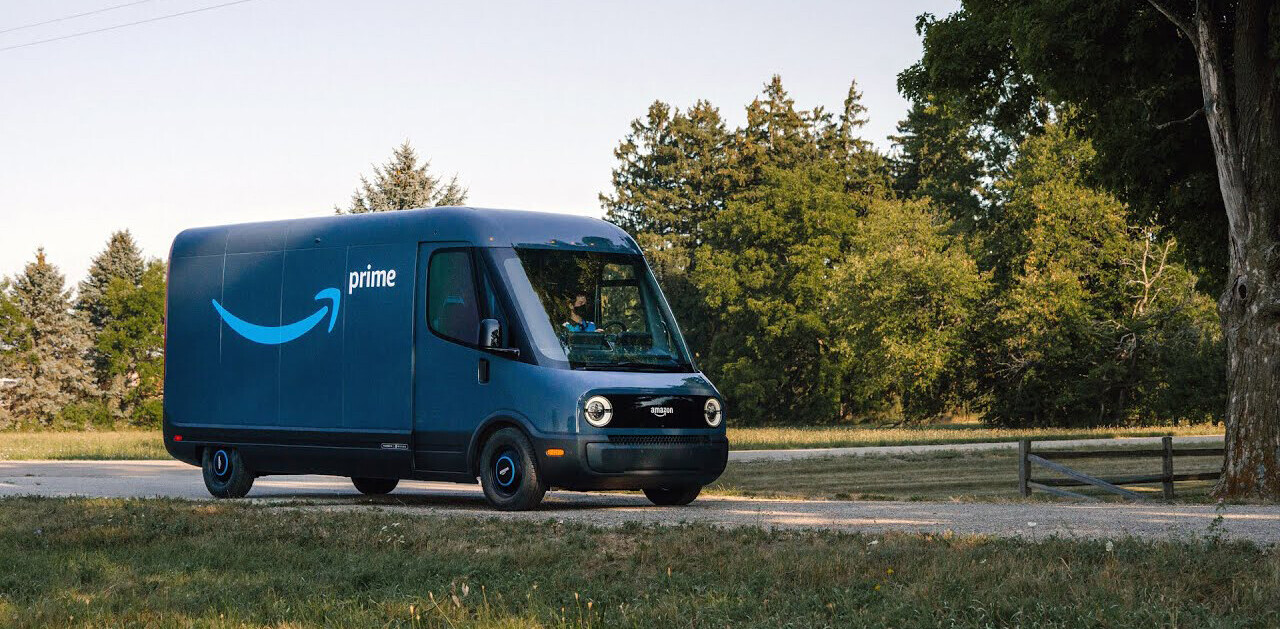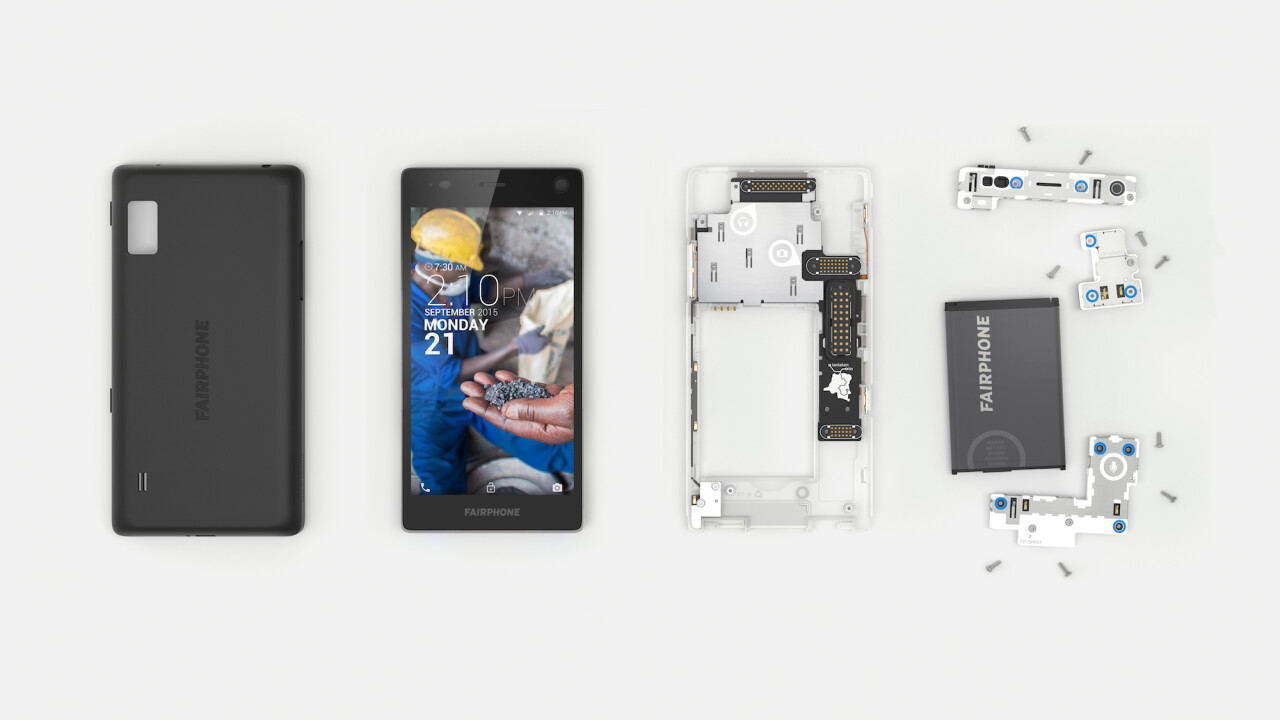
Fairphone, the Dutch startup that’s working to build a fairer smartphone, has today released a first look at the next version of its device.
Simply named ‘Fairphone 2,’ the new device that’s due out later this year marks the first time the company has designed an entire smartphone itself.
The original Fairphone was based on a reference design purchased from a factory, but utilized elements sourced by Fairphone in an effort to reduce the ‘conflict minerals’ used to build it.
The reference design constrained Fairphone’s ambitions — restricting the control it had over some of the elements found in its components, since they were already chosen by the factory, ultimately resulting in a device that wasn’t entirely fair.
When it launched the original crowdfunding campaign in 2013, 10,186 people each put up €325 for a device that didn’t exist yet – with more than 60,000 sold since then, the company looked to build an even fairer phone.
The new Fairphone
I visited the Fairphone headquarters in Amsterdam to see the new device and was blown away by what it’s built in just over a year.
The new device, which is still a prototype, is slightly bulkier than phones you might see in stores, but the guts are what make it impressive.
Fairphone 2’s specifications are what you’d expect from a modern smartphone: Android 5.1, a full-HD 5-inch display, 4G LTE, 2GB of RAM, 0.7mm Gorilla Glass 3 (the thickest available without a custom order), an 8 megapixel rear camera, a Snapdragon 801 processor, dual SIM slots, a MicroSD slot and an expansion port on the back for further sensors in the future.
The difference is, everything inside is modular and easily swapped by the user.
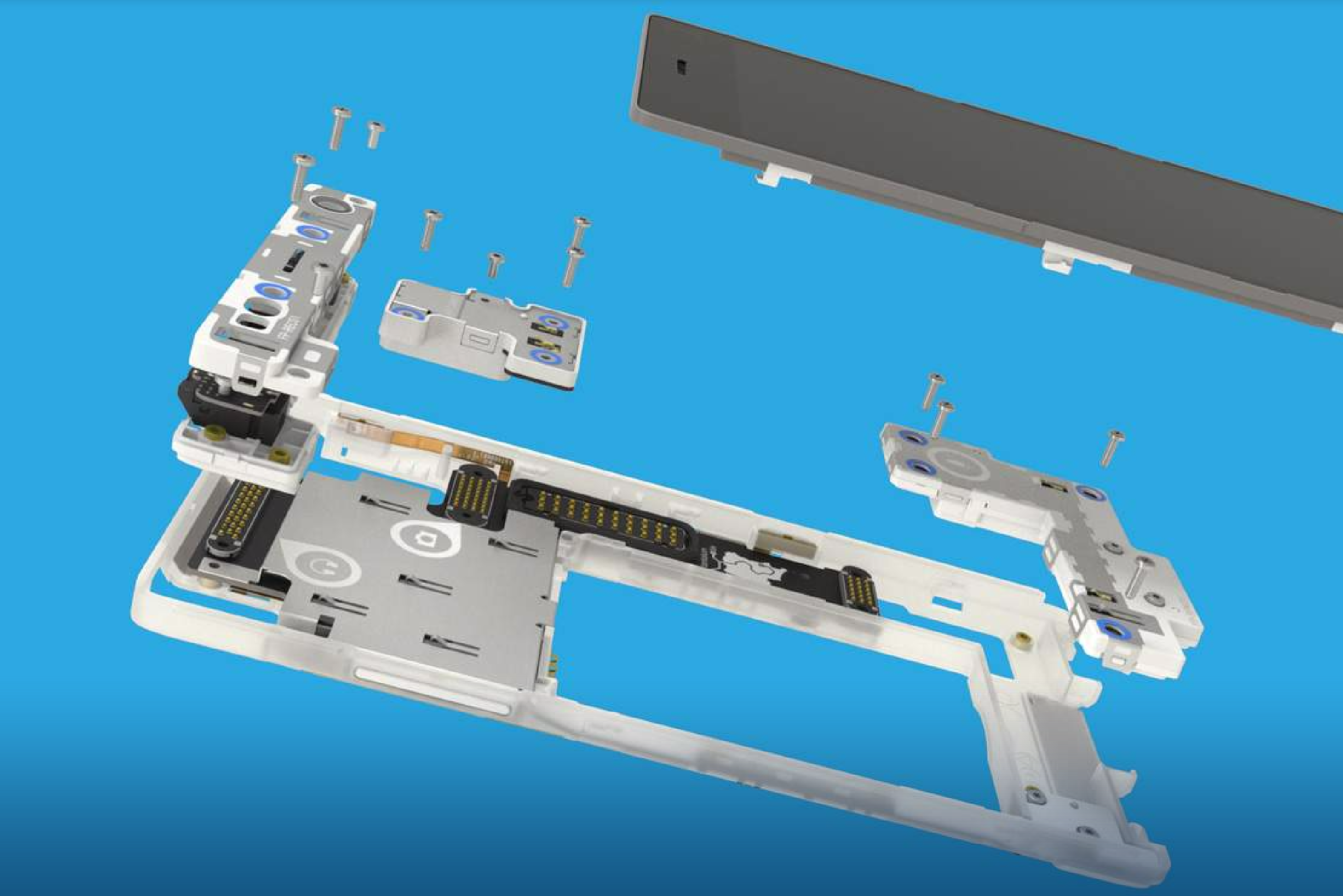
The outside case of the phone is rubberized, like the bumper case for the Nexus 5, but actually slips off the body to provide easy access to the internals of the phone. If you break the screen, it’s as simple as flicking two clips to remove and replace it — a straightforward fix to a problem that almost everyone’s spend hundreds of dollars on repairing.
The idea is that Fairphone 2 is far more durable than traditional smartphones, with parts that can easily be replaced by the user if something breaks.
Bas van Abel, CEO of Fairphone, told me that one focus with the new device was improving longevity of the phone.
As the company works to replace more of the conflict minerals inside the device — a monumentally slow and complex task, encumbered by region politics and traditions — building a phone that lasts longer is a great way to reduce the overall toll on people and the environment.
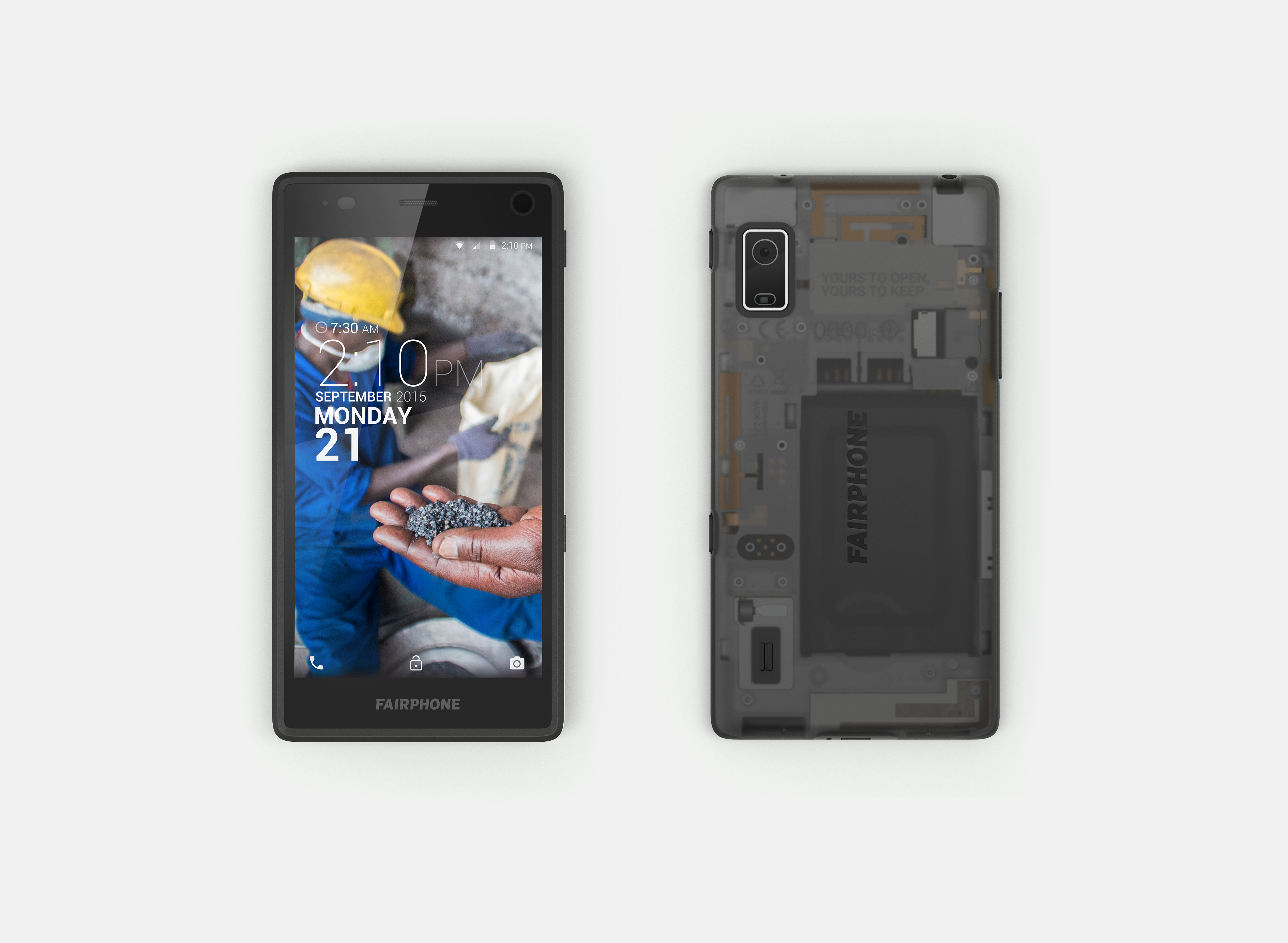
The modularity doesn’t end at the screen. Once you pop the display off, you get access to most of the components of the device directly without ribbons or complicated dismantling techniques.
You can replace the camera, CPU, microphone and many other parts by ordering a new module from the company, removing a handful of screws and swapping it in. The back is illustrated in a way that helps users of any skill level identify the part and quickly replace it.
It’s straightforward, and a gesture that Fairphone is using to encourage owners of the device to get to know their devices inside and out, as well as putting the power in their hands to repair and upgrade it.
With the Fairphone 2, the company has essentially built the modular phone Google made us all dream of, but with fairer components and a realistic release date of later this year.
Fairphone says that the modularity “[encourages] users to have a deeper relationship with their phones” by allowing them to “take more responsibility for keeping them in working condition” — a sentiment I highly agree with.
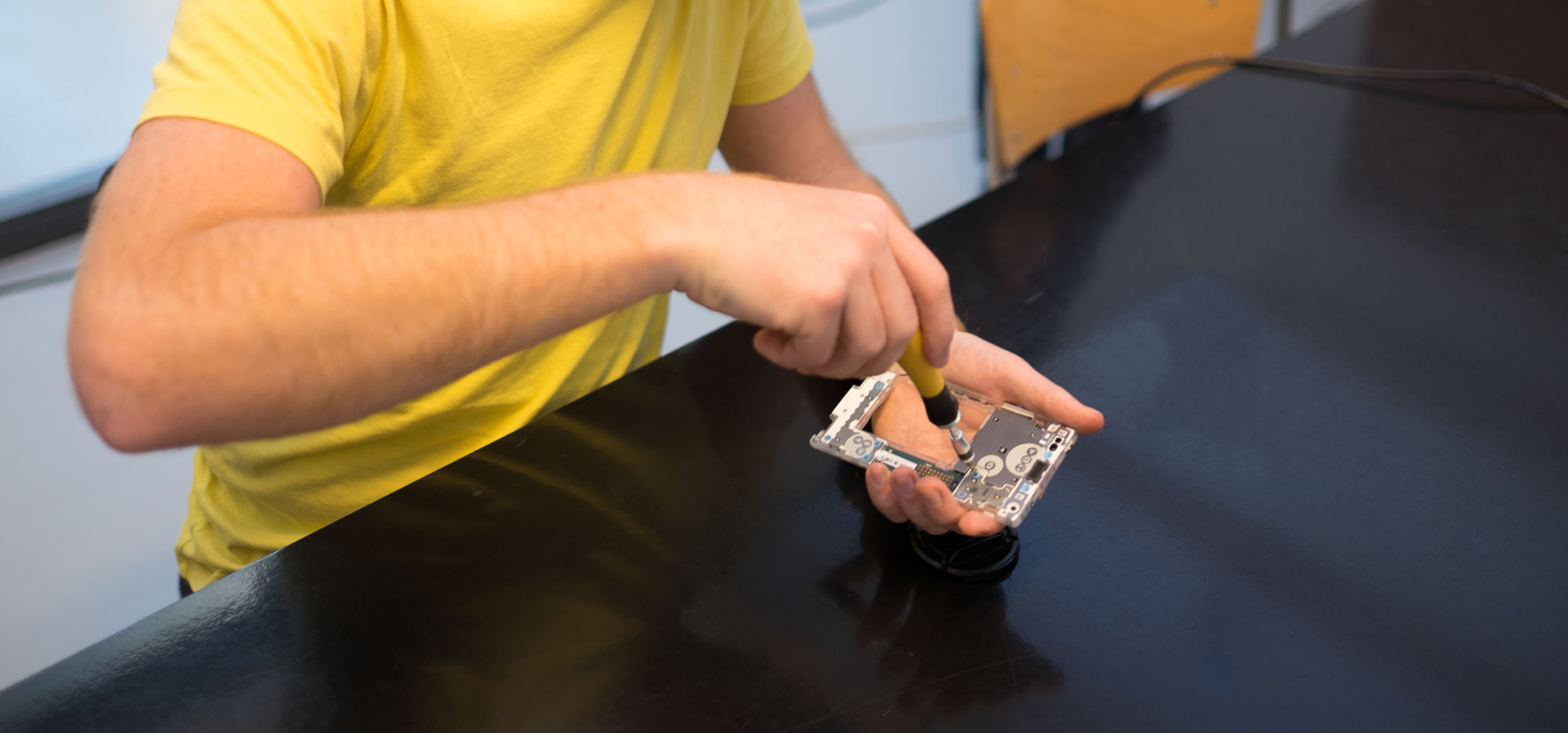
Being able to pull apart the device in a few seconds was a rewarding experience, which made me wish it was that easy to fix my iPhone. It made me establish a bond with the device I had just repaired.
Abel told me that establishing that intimate relationship with the owner of the device gives them a unique connection to it, rather than seeing it as a tool that is entirely replaced as soon as it breaks.
Changing the supply chain
What Fairphone really is trying to be is more than simply a device — it’s a socially conscious company seeking to build a phone that’s fairer on both the supply chain and the impact of the minerals it uses on both people and the environment.
Conflict minerals are materials that are mined in conditions of rampant humans rights abuses, in areas such as the Democratic Republic of the Congo. Copper, gold, tin, tungsten and many other elements mined in these areas are a part of almost every electronic device you use and the effects on people are devastating.
Fairphone has improved in this area since its first device; sourcing conflict free tin and tantalum from mines in the Congo for use in Fairphone 2 and with plans in place to source gold and tungsten in the future.
Not every material used in the device is conflict free, but the company is working improving the elements it uses and argues that it can’t change the industry overnight — it’s pushing the factories and suppliers where it can. It’s not anywhere near perfect yet, with many materials used in the phone still from conflict mines.
The company is also pushing for change in the factories where its phones are produced with its worker welfare funds. The fund is a pool of money that the workers can vote to use in specific areas, for bonuses or improvement of conditions, encouraging individual empowerment and representation for those that wouldn’t traditionally have a say.
The fund was successfully implemented for the production of the first Fairphone, and the company is taking the same approach for the new factories building its successor.
Fairphone is working to expand transparency throughout the supply chain, with plans to name factories that supply specific parts, surface sustainability reports from manufacturers and provide traceability of materials in the phone itself.
For the new phone the company is also looking to make it easy for developers to port other operating systems to the device. The company plans to open source many elements of the software so that developers can easily build their own ROMs and port other platforms like Jolla or Ubuntu to the device.
Fairphone’s work is admirable, but shows that it’s a slow, complicated road to building a truly “fair” phone. Even the large companies are starting to address many of the problems Fairphone set out to tackle.
Apple made waves when it started releasing transparency reports last year on factory conditions, environmental impact and worker treatment.
The original Fairphone sold out in February 2015 after 60,000 devices were sold to customers and the company touts over 50,000 people on the waiting list for information about the new device.
Over the last year, Fairphone has proven that consumers do care about what’s inside devices and how they affect the environment. With the Fairphone 2, it’s trying to take that to the next level, building a phone that both lasts longer and makes change in the supply chain.
Fairphone 2 will be available in Europe in the autumn of 2015, for €525. You’ll be able to pre-order a device in the summer, but you can get in line by signing up here.
Get the TNW newsletter
Get the most important tech news in your inbox each week.






